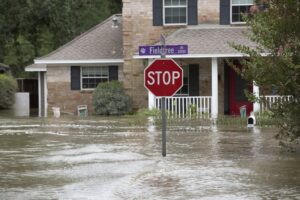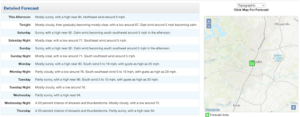
 Go to: Floods – Severe Storm
Go to: Floods – Severe Storm
Flood Watch
National Weather Service Austin/San Antonio TX
1146 PM CDT Sun Jul 6 2025
TXZ171>173-184>194-203>208-071800-
/O.NEW.KEWX.FA.A.0005.250707T0446Z-250708T0000Z/
/00000.0.ER.000000T0000Z.000000T0000Z.000000T0000Z.OO/
Llano-Burnet-Williamson-Edwards-Real-Kerr-Bandera-Gillespie-
Kendall-Blanco-Hays-Travis-Bastrop-Lee-Uvalde-Medina-Bexar-Comal-
Guadalupe-Caldwell-
Including the cities of Llano, Fredericksburg, Bastrop, Uvalde,
Blanco, Georgetown, Lockhart, Bandera, Austin, Rocksprings, San
Antonio, Boerne, Hondo, New Braunfels, Seguin, Leakey, Kerrville,
San Marcos, Giddings, and Burnet
1146 PM CDT Sun Jul 6 2025
...FLOOD WATCH IN EFFECT THROUGH MONDAY EVENING...
* WHAT...Flooding caused by excessive rainfall is possible. Local
rainfall amounts of 2 to 4 inches with 10 inches possible.
* WHERE...A portion of south central Texas, including the following
counties, Bandera, Bastrop, Bexar, Blanco, Burnet, Caldwell,
Comal, Edwards, Gillespie, Guadalupe, Hays, Kendall, Kerr, Lee,
Llano, Medina, Real, Travis, Uvalde and Williamson.
* WHEN...Through 7 PM CDT Monday evening.
* IMPACTS...Excessive runoff may result in flooding of rivers,
creeks, streams, and other low-lying and flood-prone locations.
* ADDITIONAL DETAILS...
- A moist tropical airmass combined with a slow moving storm
system will bring another round of scattered to numerous
showers and storms overnight into Monday morning with heavy
rain rates possible.
- http://www.weather.gov/safety/flood
PRECAUTIONARY/PREPAREDNESS ACTIONS...
You should monitor later forecasts and be alert for possible Flood
Warnings. Those living in areas prone to flooding should be prepared
to take action should flooding develop.
&&
$$
CP
Check the active emergency information hub from HSEM for important updates. Check the wildfires map for current status of fires. Check the wind map for wind direction. Check the national weather service for local alerts.
Use the window at right or go to weather.gov
Check smoke alarms and carbon monoxide detectors
Contact your healthcare provider If you are sick and need medical attention. Wait for further care instructions and shelter in place, if possible. If you are experiencing a medical emergency, call 9-1-1.
Gas up your car and (if you have one) generator. Check for old, bad gas in the generator.
DriveTexas.org shows real time road conditions. Travis County
Road Closures shows planned closures.
For organizers: Austin Real Time Road Conditions is the data on the open porta
To get a forecast from the National Weather Service (English only) in your exact location, go to the page for Austin/San Antonio, and scroll down to this section. Click your exact location on the map and see the detailed forecast change for your area.

If it looks like your area might be evacuated, get your go bag ready, including documents and and N95 mask.
Be prepared to bring pets with you or make other preparations.
Get extra water together.
Alert vulnerable neighbors and share warming supplies. Think about people who are unhoused, older adults, and people living alone or with physical disabilities.